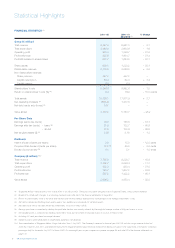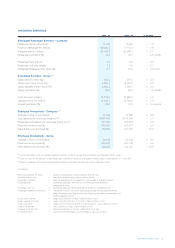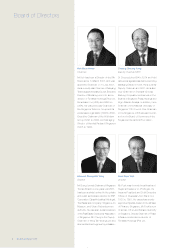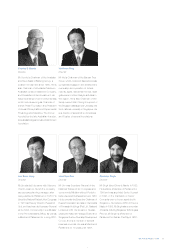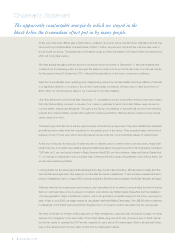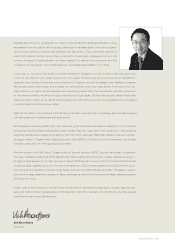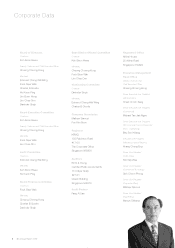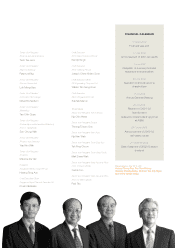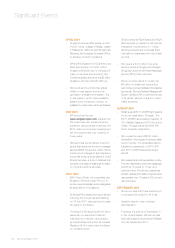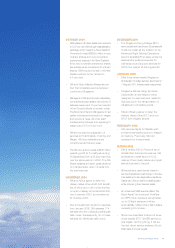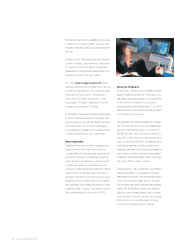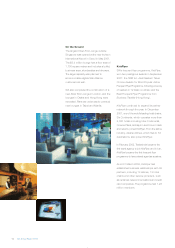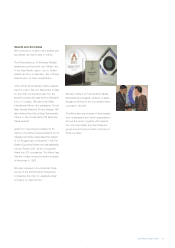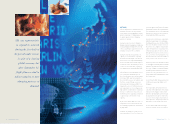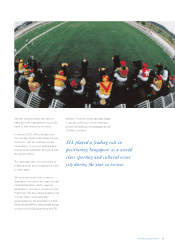Singapore Airlines 2002 Annual Report Download - page 14
Download and view the complete annual report
Please find page 14 of the 2002 Singapore Airlines annual report below. You can navigate through the pages in the report by either clicking on the pages listed below, or by using the keyword search tool below to find specific information within the annual report.
A TESTING TIME IN THE AIRLINE’S
HISTORY
The year ending 31 March 2002 will be
remembered as the most difficult in the
30-year history of Singapore Airlines.
It was a year when staff rose to the challenge
of weathering the tough economic and
security conditions and positioning the Airline
to prosper during the recovery.
Even before the events of September 11,
the airline industry was feeling the effects of
a weak global economy. After September 11,
the situation deteriorated as many people
curtailed air travel. Load factors fell sharply
across the SIA network, especially on services
to and from the United States and Japan.
Capacity was adjusted to match the lower
demand. Emerging patterns were continuously
analyzed and schedules adjusted with
sufficient lead-time to avoid disruption to
customers. Negotiating teams went back
to aircraft manufacturers and equipment
suppliers and, with their cooperation, secured
agreements to defer aircraft deliveries to
match lower growth projections.
All divisions and subsidiaries were directed
to review their budget plans. Non-essential
projects were deferred or cancelled. Only
those that were critical to maintaining service
and safety standards, or were key platforms
for future growth, were allowed to proceed.
Perhaps the most demonstrative example
of the entire Group’s commitment to
overcoming the crisis was the agreement
by staff of all levels to accept pay cuts, ranging
from 2.5 per cent for the most junior to 15
per cent for the most senior. The Board too,
decided on a reduction in directors’ fees.
It was a year when staff
rose to the challenge of
weathering the tough
economic and security
conditions and positioning
the Airline to prosper
during the recovery.
Operating Review
PRODUCT AND SERVICE DEVELOPMENT
SIA Mobile Services
In May 2001, SIA was the first international
airline to introduce a global flight alert service
via the Short Message System (SMS). This
service sends flight departure and arrival
times on request to customer-specified
mobile phones and pagers. Customers can
also check flight schedules and status using
this service.
Two months later, the Airline’s first non-English
mobile service was launched on the NTT
DoCoMo i-Mode service, used by 25 million
people in Japan.
In December 2001, SIA Mobile Services was
further enhanced, enabling customers to
calculate the number of miles they could
earn when flying from one city to another
and check their KrisFlyer frequent flyer miles,
using their mobile devices. The number of
flight alerts per customer was increased and
made more user-friendly for all KrisFlyer
members and registered users.
SIA Annual Report 01/02 13
12 SIA Annual Report 01/02


